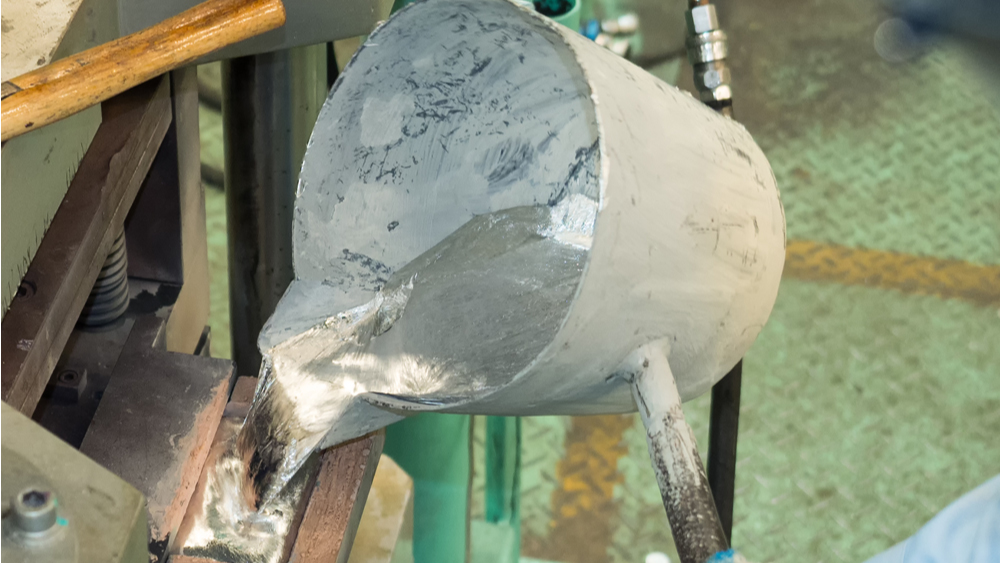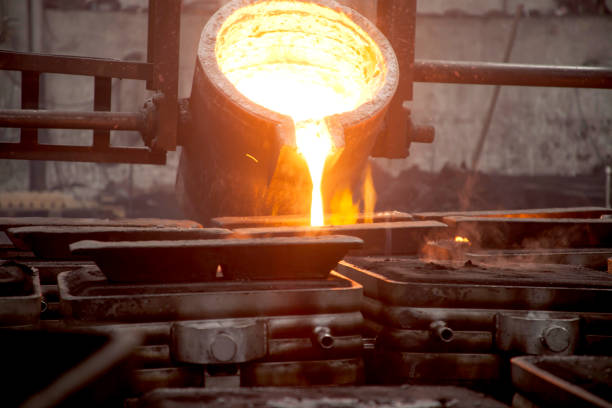Aluminum Casting techniques that drive innovation in production
Understanding the Manufacturing Process and Maintenance Practices for Aluminum Factory Products
The manufacturing procedure for aluminum foundry items is complex and needs a complete understanding of several phases. From the melting of light weight aluminum at high temperature levels to various casting techniques, each action plays a vital role. Additionally, maintenance methods ensure devices stays effective and items are devoid of defects. Nevertheless, the complexities of these processes and their effect on item top quality raising crucial concerns regarding finest methods and innovative techniques in the industry.
Review of Aluminum Foundry Products
Aluminum shop products are critical parts in numerous markets, providing a mix of lightweight stamina and corrosion resistance. These products are generally utilized in fields such as vehicle, aerospace, and building, where toughness and effectiveness are vital. Light weight aluminum's reduced density makes it an ideal material for applications calling for minimized weight without sacrificing structural honesty. The adaptability of aluminum allows for the production of complicated geometries, dealing with varied style needs.
Light weight aluminum foundry items can be tailored with numerous alloys to enhance certain buildings, such as boosted thermal conductivity or raised firmness. Their resistance to oxidation and rust warranties long life, making them ideal for both interior and exterior applications. The mix of these attributes adds to the growing preference for aluminum in contemporary production. As industries look for to maximize efficiency and sustainability, light weight aluminum shop products remain to play an essential duty in fulfilling these needs.
Thawing Process: Changing Light Weight Aluminum
The melting process is a fundamental step in the manufacturing of light weight aluminum factory items, as it transforms solid light weight aluminum right into a liquified state suitable for casting. This process normally occurs in a heater, where scrap aluminum or ingots are heated to temperature levels around 660 levels Celsius. The option of heater-- be it electric, gas, or induction-- influences the performance and cost of melting.
Throughout melting, careful consideration is provided to the removal of contaminations, such as oxides and various other contaminants, which can negatively influence the quality of the last item. Changes may be contributed to aid in this filtration procedure, boosting the fluidity of the liquified metal.
On top of that, temperature control is necessary to guarantee harmony and prevent overheating, which can result in oxidation. The melting procedure not only prepares light weight aluminum for spreading but likewise plays a significant role in determining the stability and homes of the last factory items.
Casting Techniques in Light Weight Aluminum Foundry
Various spreading techniques are used in aluminum foundries to develop top notch components, each suited to different applications and requirements. Among the most frequently used methods are sand spreading, pass away casting, and financial investment casting. Sand casting makes use of a combination of sand and binder to develop molds, enabling intricate forms and big parts (aluminum foundry). Pass away spreading, defined by the high-pressure shot of molten aluminum right into steel mold and mildews, creates accurate and repeatable components, perfect for mass production. Investment casting, or lost-wax casting, includes creating a wax model that is coated in a ceramic covering, making it possible for fine details and complex layouts. Each method has its benefits; sand casting is cost-efficient for low-volume manufacturing, while die spreading supplies performance for high-volume runs. Financial investment spreading is preferred for parts calling for extraordinary accuracy and surface finish. Selecting the appropriate technique depends on factors such as manufacturing quantity, component complexity, and product properties
Ending Up Procedures for Aluminum Parts
After casting strategies have click here for info formed the aluminum elements, completing processes play a significant function in improving their functionality and visual charm. These processes usually consist of machining, surface area treatment, and covering applications. Machining includes accurate elimination of product to attain preferred measurements and surface area top quality. This is crucial for making sure that components fit perfectly into their desired applications.
Surface treatments, such as anodizing and polishing, are utilized to boost corrosion resistance and boost visual features. Casting Foundry. Anodizing, specifically, provides a protective oxide layer, making the light weight aluminum more sturdy and visually attractive

Upkeep Practices for Long Life
Implementing normal maintenance practices is vital for making sure the long life of light weight aluminum shop items. Regular examinations should be conducted to recognize damage, as very early discovery can avoid pricey fixings and expand the life-span of components. Cleansing tools and machinery regularly minimizes the threat of contamination, which can detrimentally impact product quality. Lubrication of moving parts is likewise important, as it reduces friction and wear, enhancing functional effectiveness.
Furthermore, the application of a precautionary maintenance schedule assists in systematically addressing possible problems before they rise (Aluminum Casting). This includes monitoring for leaks, making sure appropriate alignment, and adjusting machinery. Team training on correct handling and maintenance strategies fosters a society of care, which is crucial for maintaining product honesty. Recording upkeep activities provides important understandings right into performance patterns, enabling for informed decision-making relating to future upkeep strategies.
Quality Assurance and Testing in Light Weight Aluminum Foundry Production
Quality assurance and testing are extremely important in aluminum shop production, as they ensure that end products meet specified requirements and customer expectations. This process starts with resources evaluation, making certain that aluminum alloys comply with needed make-ups. Throughout the manufacturing cycle, in-process examinations are carried out to keep an eye on criteria like product, pressure, and temperature level flow.
When casting is total, different examinations-- such as dimensional checks, aesthetic inspections, and non-destructive testing-- are carried out to recognize any type of defects. Mechanical homes, including tensile stamina and firmness, are assessed with standardized testing approaches.
In addition, adherence to sector criteria, such as ISO and ASTM, is important for making sure this content item high quality. Statistical procedure control methods are typically employed to assess manufacturing data and promote continual enhancement. By executing rigorous top quality control actions, aluminum shops can enhance item dependability and minimize waste, inevitably causing better consumer satisfaction and functional effectiveness.
Regularly Asked Inquiries
What Are the Environmental Influences of Aluminum Shop Workflow?
Light weight aluminum factory procedures can lead to substantial environmental impacts, consisting of air contamination from exhausts, water contamination from waste discharge, and energy usage adding to greenhouse gas emissions, ultimately influencing regional environments and neighborhood health and wellness.
Exactly How Do Light Weight Aluminum Costs Affect Shop Production Choices?
Aluminum costs significantly affect foundry manufacturing choices; higher costs might lead to decreased result or enhanced effectiveness actions, while lower costs can encourage expanded More Help production and investment in brand-new innovations to boost competition and earnings.
What Precaution Are Necessary in Aluminum Foundries?
Vital safety and security steps in light weight aluminum shops consist of protective equipment, proper ventilation to minimize inhalation of fumes, routine tools upkeep, training on emergency situation procedures, and adherence to safety procedures to stop crashes and injuries amongst employees.
Can Light Weight Aluminum Be Recycled, and Exactly How Is It Refined?
Light weight aluminum can indeed be recycled. The procedure involves collection, melting, and changing the product into new products, significantly minimizing energy usage and environmental effect contrasted to primary aluminum manufacturing while protecting material top quality.
What Are Typical Flaws in Light Weight Aluminum Spreading and Their Causes?

The production process for aluminum shop products is intricate and requires an extensive understanding of multiple phases. Aluminum foundry items are important components in various sectors, using a blend of lightweight strength and rust resistance. The melting process is an essential action in the production of light weight aluminum foundry items, as it transforms strong aluminum right into a liquified state suitable for spreading. Implementing normal upkeep techniques is necessary for making sure the durability of light weight aluminum foundry products. Quality control and testing are vital in light weight aluminum factory manufacturing, as they guarantee that final items meet specified criteria and customer expectations.